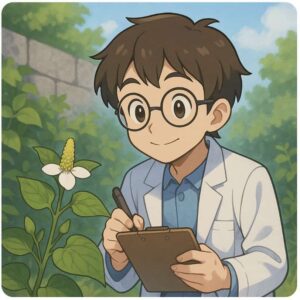Like a Time Bomb! Discover How Plants Reproduce Through the Explosive Secrets of Fern Spores
I’m Ken Kuwako, your Science Trainer. Every day is an experiment!
Hello everyone! Have you ever been walking in nature and spotted a mysterious, coiled-up sprout emerging from the ground? That plant, which looks just like a fiddlehead (or “zenmai” in Japanese), is actually a fern, a type of plant that has been on Earth for about 400 million years.
Ferns were supporting Earth’s ecosystem long before vertebrates, including humans, even appeared on land. They don’t reproduce with seeds; instead, they propagate using tiny, microscopic particles called spores.
Today, we’re going to explore the secrets of the fern’s ancient survival strategy through an observation experiment using a microscope! Let’s uncover the grand drama of plant evolution right from the nature around us.
[This article is also available as a radio broadcast!]
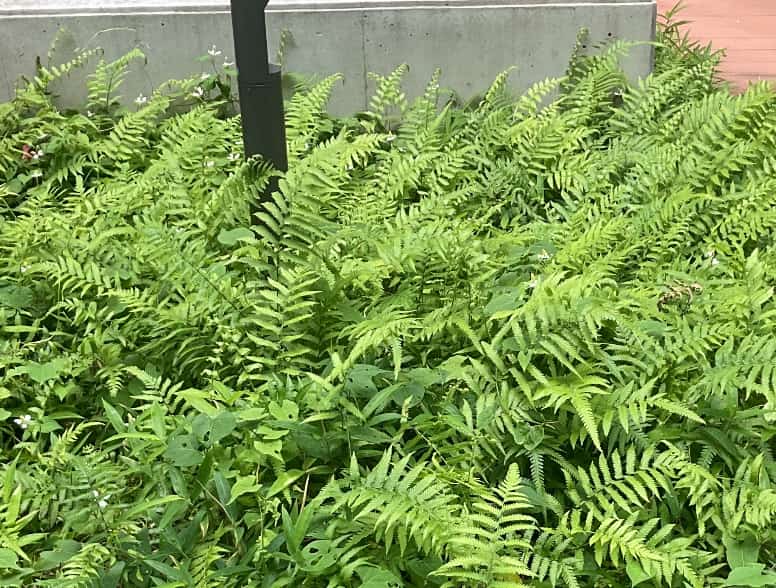
🌿 First, Let’s Find Some Ferns! Pay Attention to the “Vascular Bundles”—A Sign of Evolution
From spring to early summer, ferns send out vigorous new shoots. Take a walk around your school, a park, or a forest—anywhere slightly damp. If you spot a coiled-up shoot, often called a “fiddlehead,” that’s the fern’s emerging leaf.

In the classification of plants taught in middle school science, ferns are a crucial group on the evolutionary path: they possess vascular bundles but do not produce seeds.
Their underground stems (rhizomes) show the typical arrangement of vascular bundles, which transport water and nutrients.
The “leaves extending above ground” (including the long leaf stalks) receive branched-off vascular bundles from this rhizome.
Vascular bundles are bundles of tubes that transport water and nutrients, much like veins in an animal. The fact that these bundles run through the underground stem and the leaves is the key difference between ferns and mosses. This feature allowed ferns to grow much larger than mosses and successfully thrive on land. The branching pattern of these vascular bundles is definite proof that you are looking at a true leaf.
🔬 Preparing and Procedure for Observing Spores
Let’s take a look at the fern’s reproductive particles, the “spores,” under a microscope. These spores are tightly packed inside the tiny, granular structures on the underside of the leaf, called sporangia.
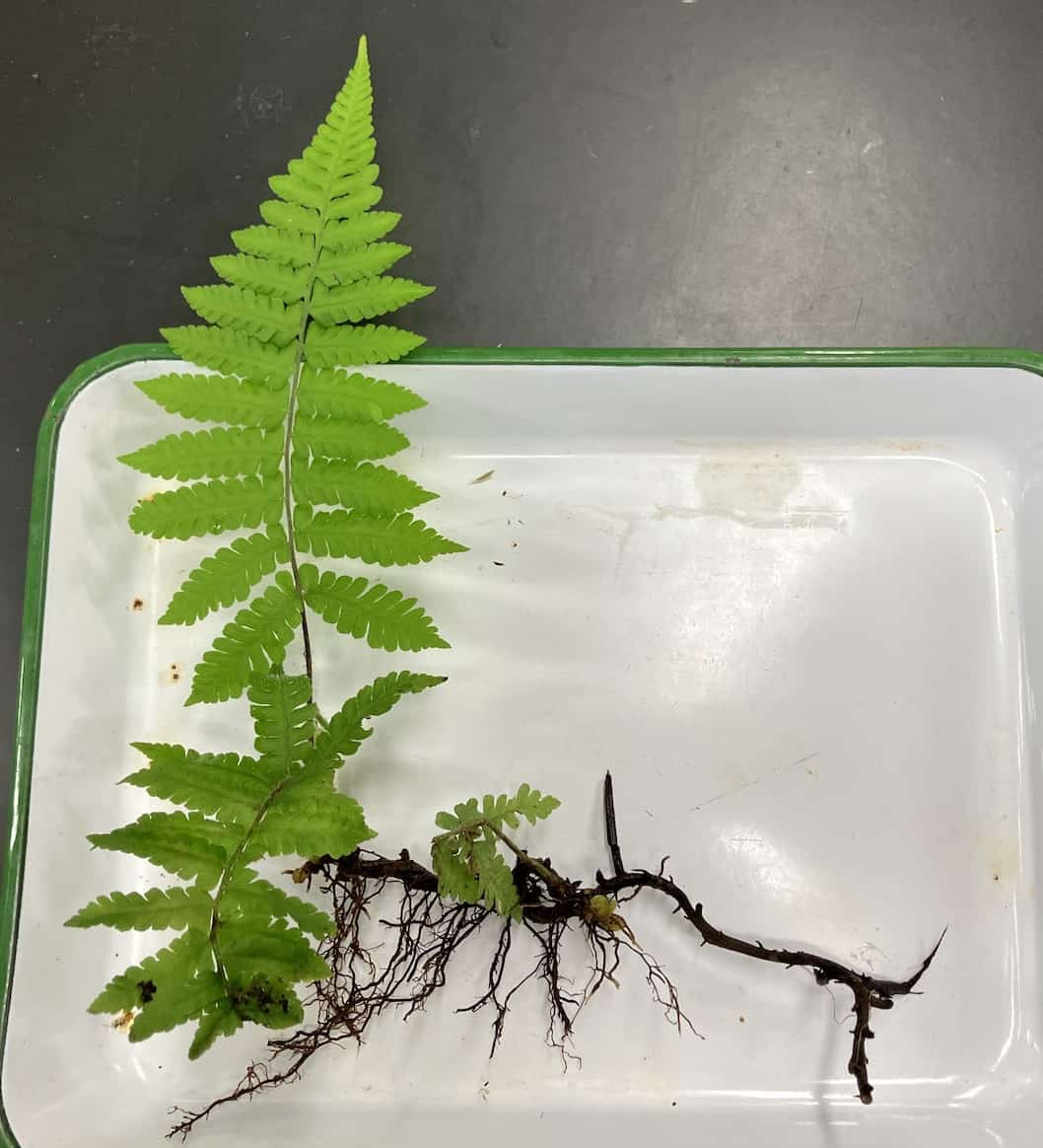
Overall View
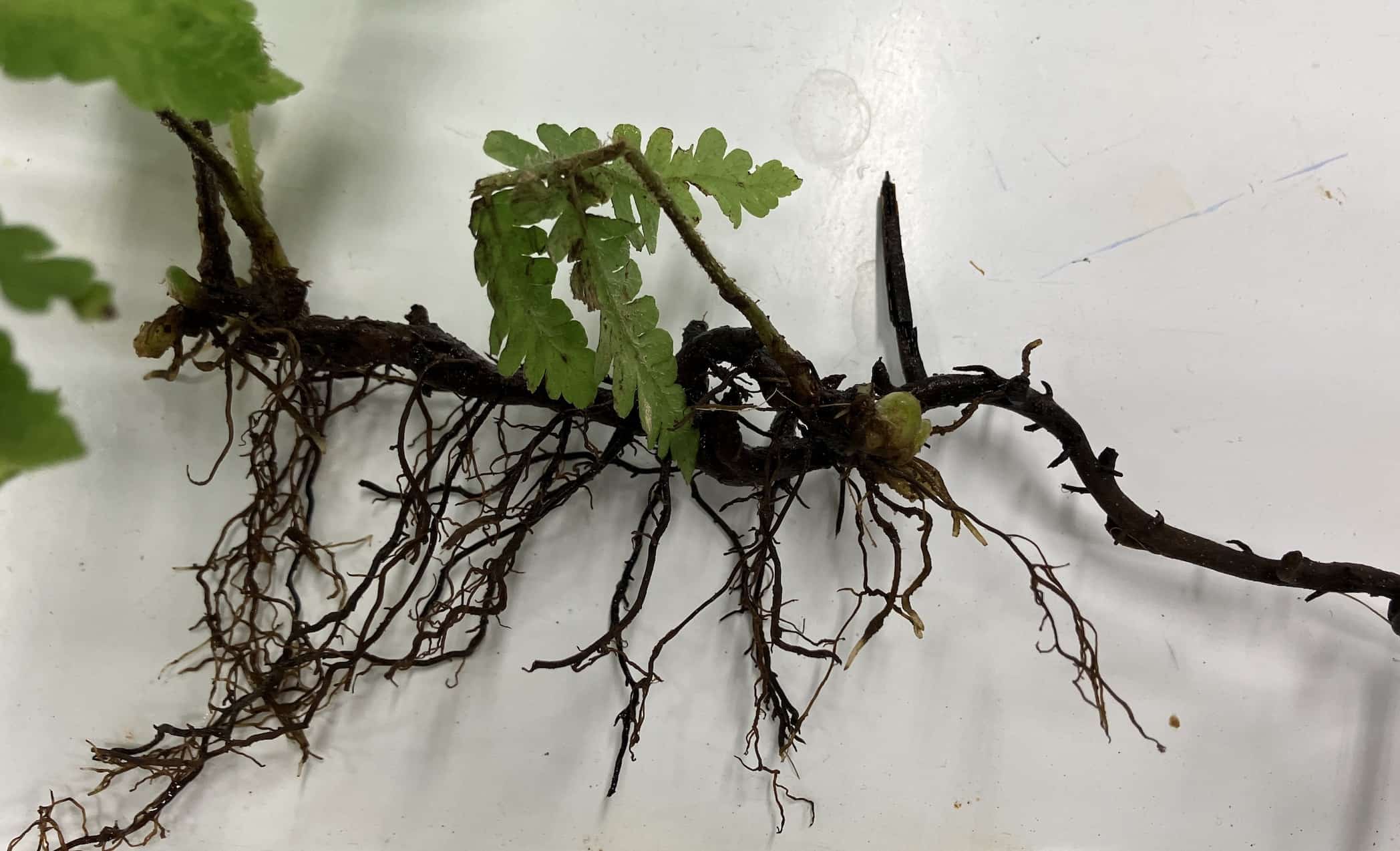
View of Stem and Roots
What You Will Need
A fern specimen (specifically one with brown sporangia on the underside of the leaves)
Tweezers (or forceps)
Slide glass, cover glass
Microscope (around 100x magnification is sufficient for observation)
Ethanol (to be used later for the experiment to make the sporangia burst)
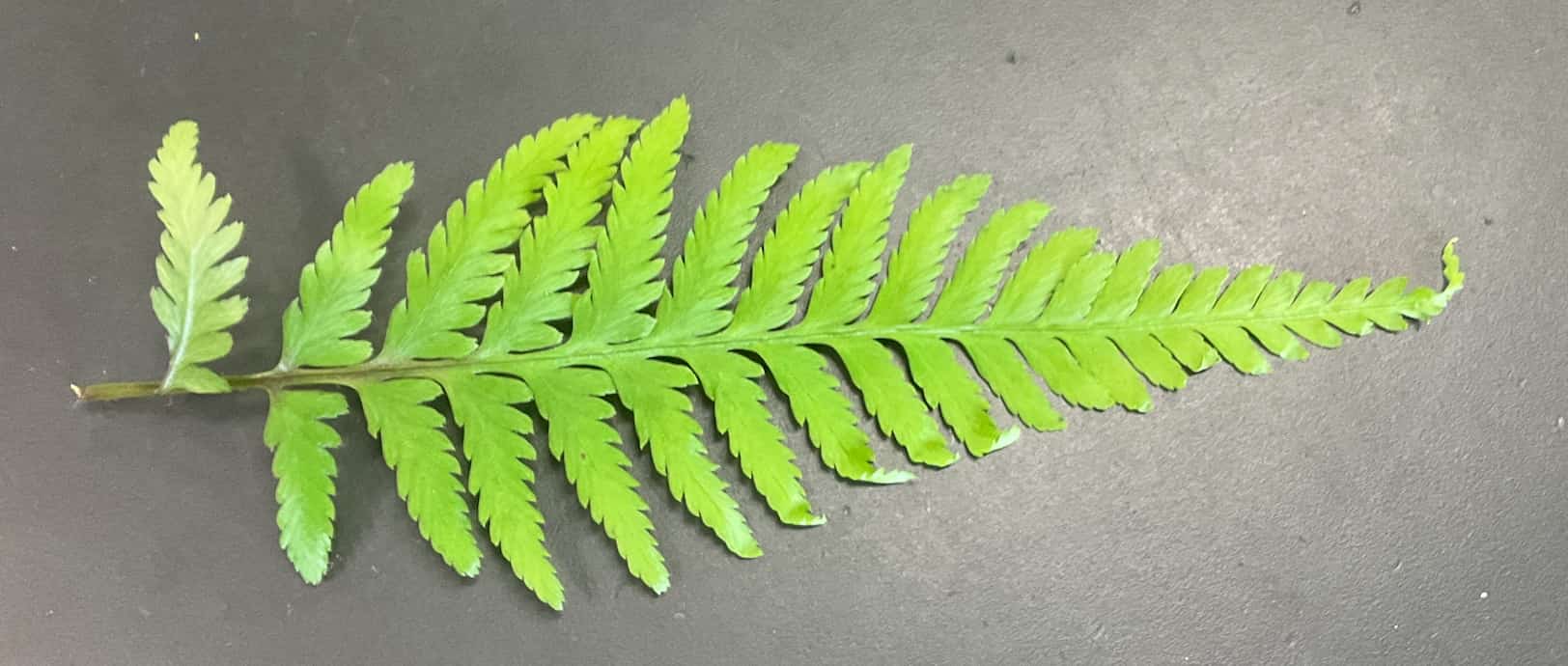
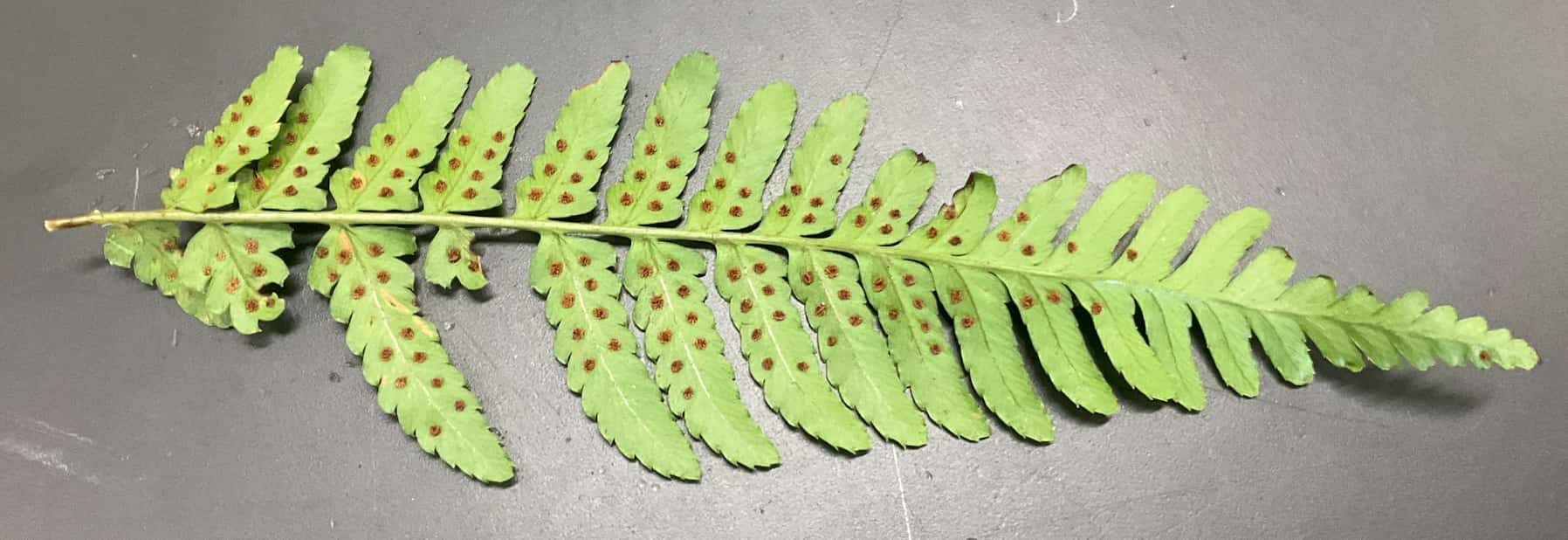
Procedure
1. Check the underside of the fern leaf
Select a leaf that has sporangia (the section with tiny grains lined up). 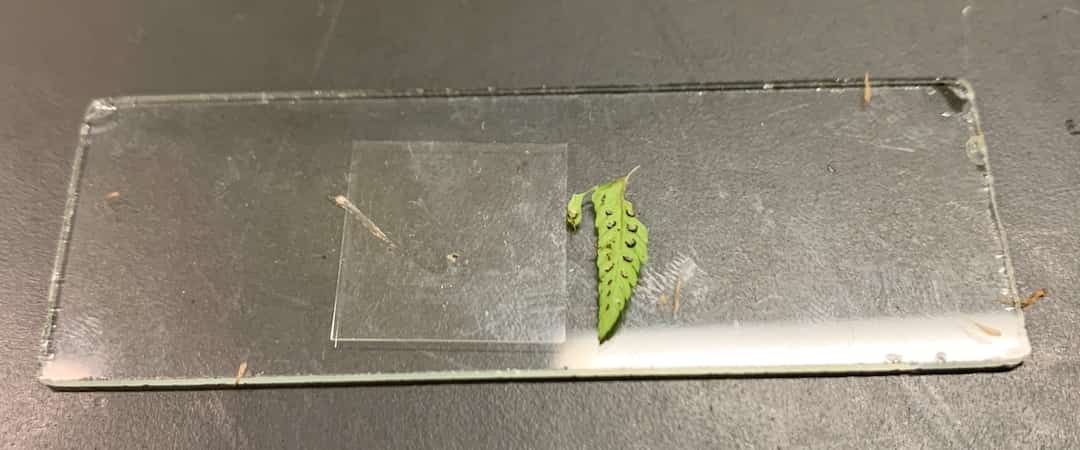
2. Extract the Spores
Gently peel off the sporangia using the tweezers.
3. Place on the Slide Glass
Place the sporangia on the slide glass and lightly press with the cover glass.
4. Observe under the Microscope
Observing at a low magnification (around 100x) will show you the spores tightly packed inside the sporangia.
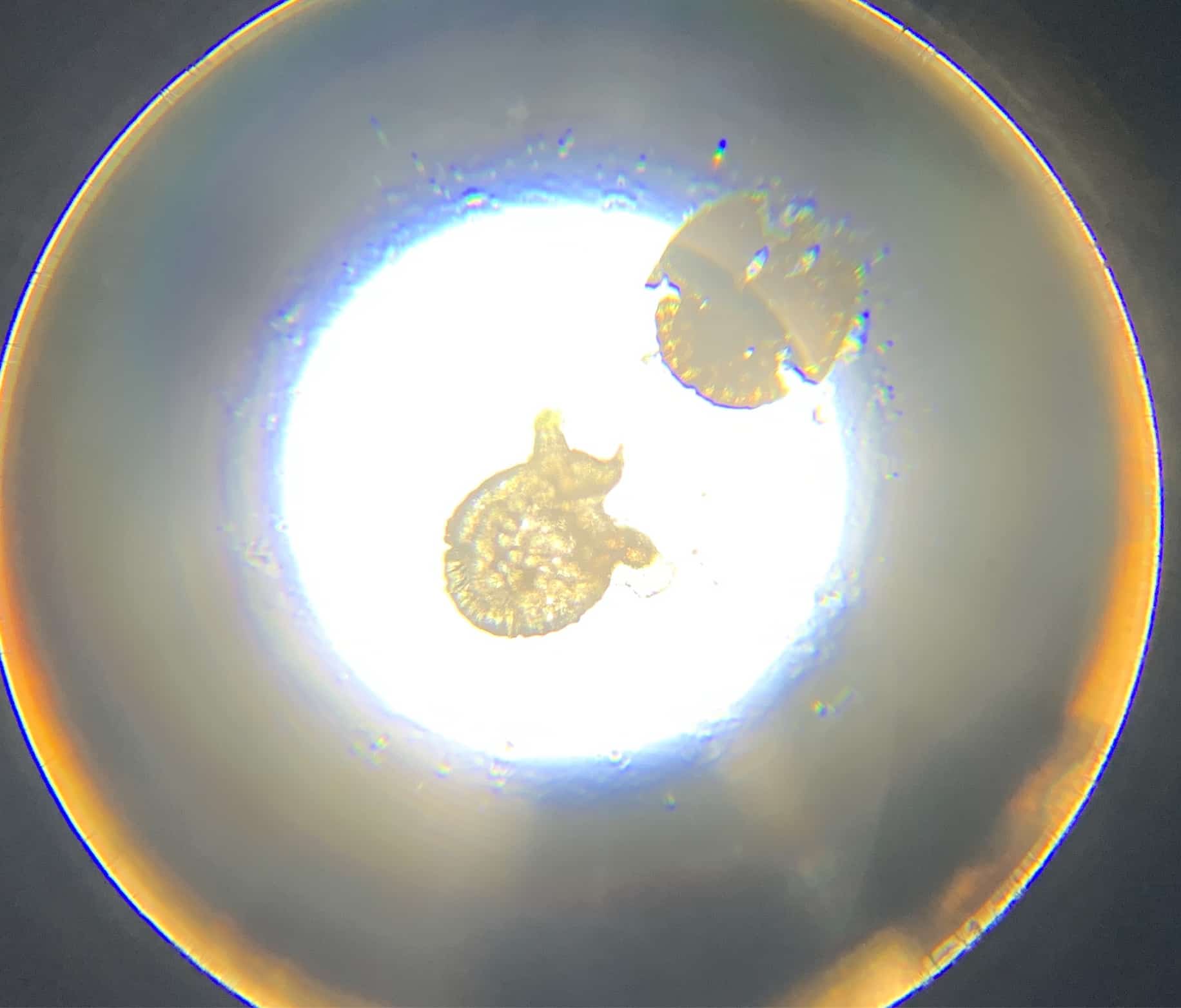
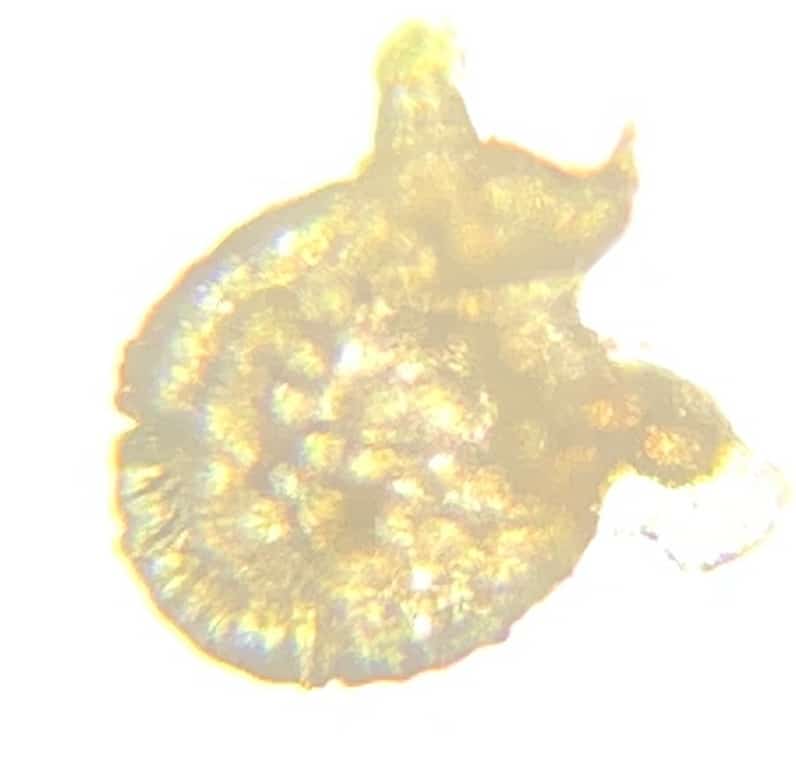
The Drama of Science! The Moment the Sporangia “Burst”
As you continue your observation, you might witness an astonishing phenomenon. Over time, the sporangia will burst open, ejecting the spores inside. This happens because the sporangium dries out, loses cellular water, and the resulting pressure change causes a lid-like structure to open.
In fact, this “bursting” mechanism is one of the fern’s advanced strategies for dispersing spores over a distance.
[Experiment Tip 💡] To trigger the drying process, try adding ethanol diluted to about 80% to your specimen. The rapid loss of moisture will cause the sporangia to burst open vigorously after a short while, which you can observe.
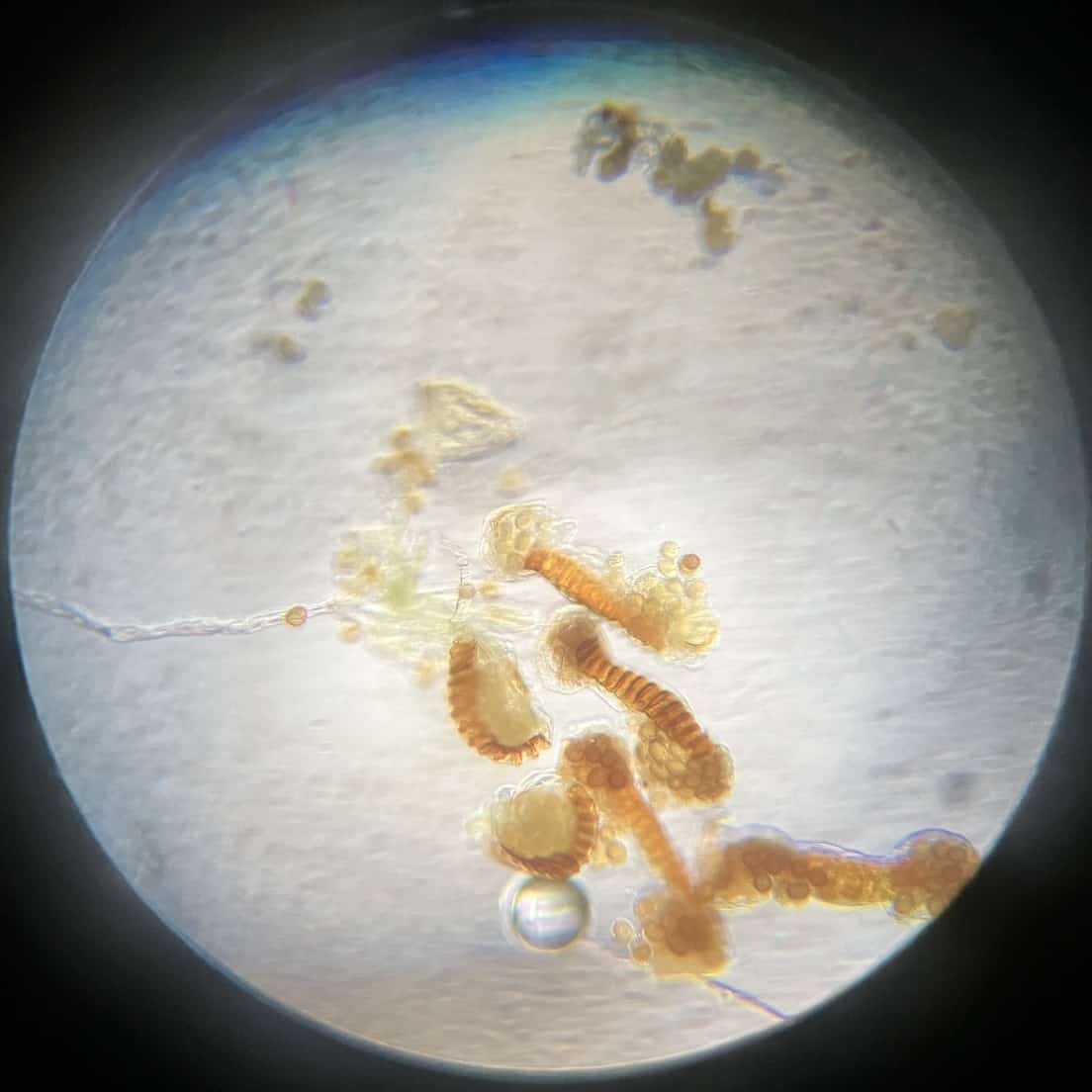
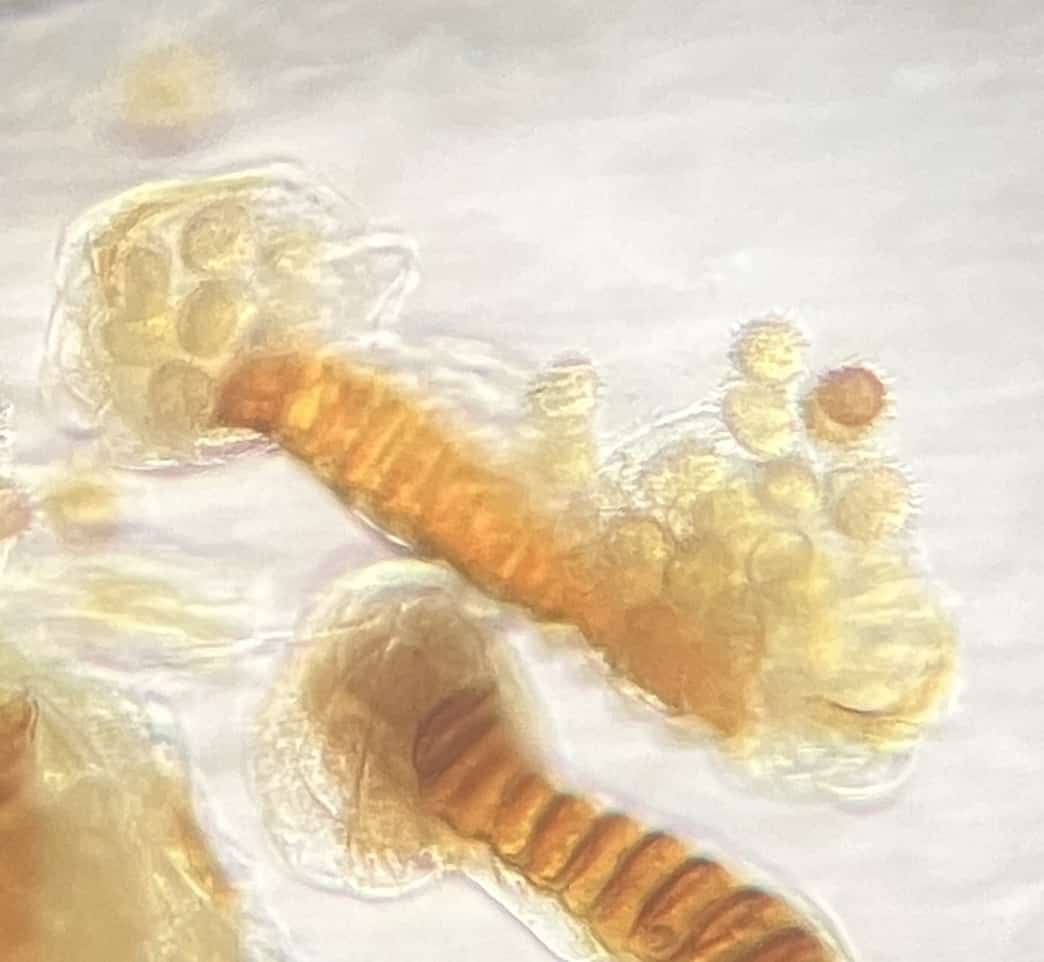
When you observe it…
What looks like a simple brown grain to the naked eye, under the microscope, appears as a tiny capsule densely packed with intricately formed spores. For students, this can lead to a huge discovery about the diversity of life: “Plants can reproduce not just with seeds, but with such tiny particles!”
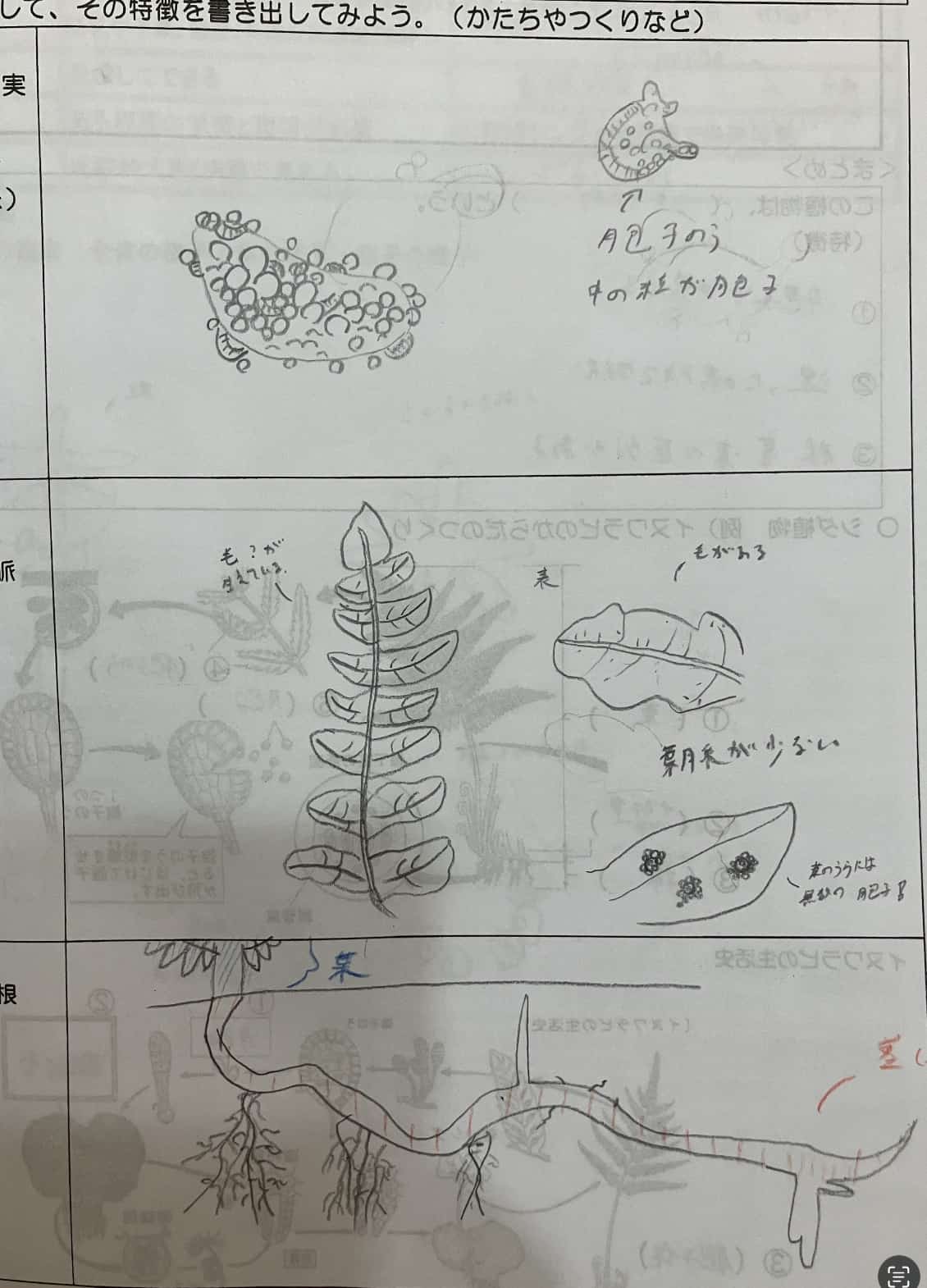
Teaching Points and Further Exploration
This experiment is a perfect opportunity for students to experience the knowledge of “Plant Classification” (taught in middle school) with all their senses.
Comparison: Comparing the difference between the seeds of seed plants, the spores of mosses, and the spores of ferns will make the evolutionary timeline of plants clearer and deepen understanding.
Observe Over Time: Leaving the specimen for a few hours to observe the sporangia bursting naturally is also an interesting experiment.
Germination Experiment: By sowing fern spores on damp cotton and observing them germinate into a small, heart-shaped structure called a prothallus, students can learn about the plant’s entire life cycle.
By observing fern spores, we learn about the ancient wisdom of plants and their diverse methods of reproduction. Be sure to use the nature around you and the microscope as a tool to stimulate your students’ scientific curiosity!
References:
NHK for School: How Ferns Reproduce https://www2.nhk.or.jp/school/movie/clip.cgi?das_id=D0005401572_00000
Throwing Spores https://www2.nhk.or.jp/school/movie/bangumi.cgi?das_id=D0005100107_00000
Contact & Requests
Make the wonders and fun of science more accessible! We’ve compiled easy-to-understand tips and fun science experiments you can do at home. Feel free to search around!
The content of Kagaku no Netacho is now a book. Find details here
Learn about the operator, Ken Kuwako, here
For all requests (writing, lectures, science classes, TV supervision, appearances, etc.), click here * Updates on articles are available on X!
![]() We post experiment videos on the Kagaku no Neta Channel!
We post experiment videos on the Kagaku no Neta Channel!


